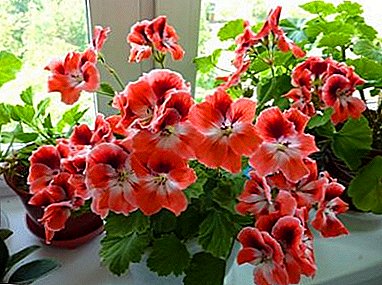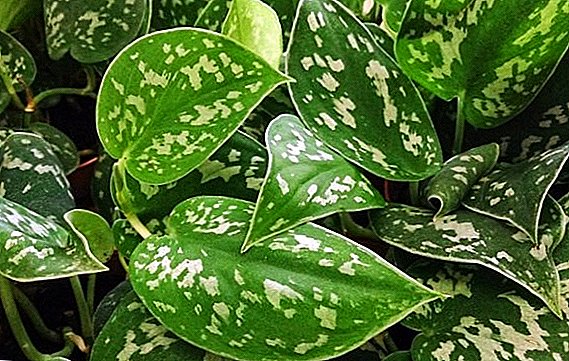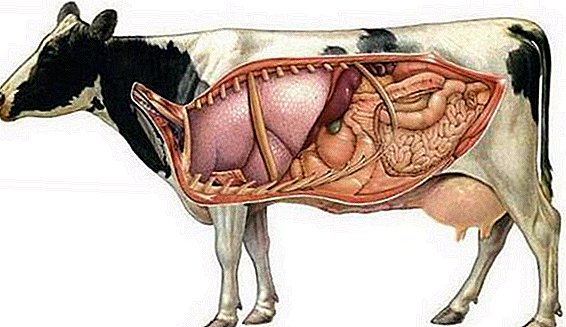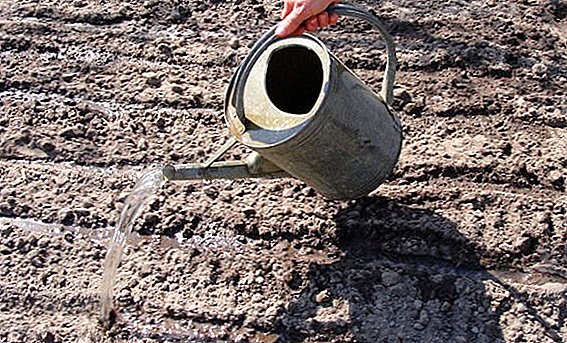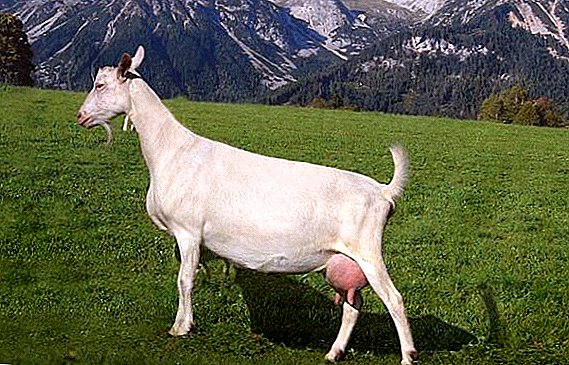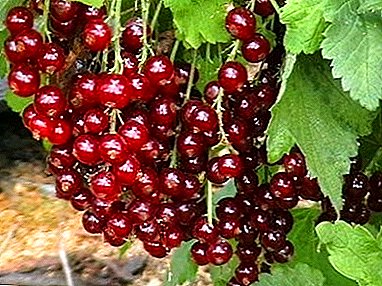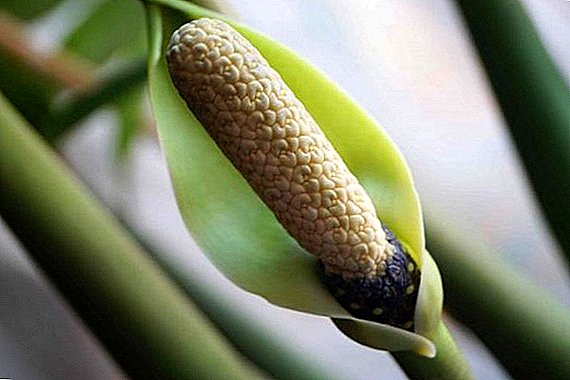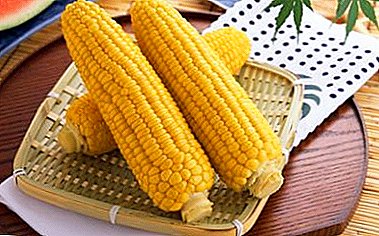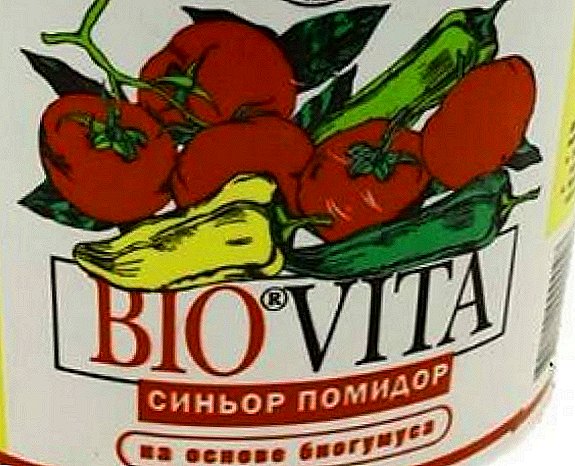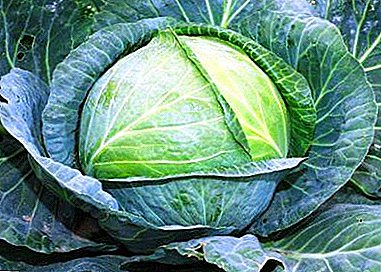
Cabbage - a vegetable almost daily consumption. It can be eaten fresh, pickled or pickled.
The high content of nutrients, vitamins and minerals, as well as excellent taste properties make this vegetable a frequent guest at the dinner table in every home.
Today we will characterize this variety of white cabbage, tell you about the advantages and disadvantages. And also you will learn how to grow seedlings from seeds and properly care during growing.
History of origin and description
White cabbage varieties "Gift" is grown for a long time. This variety was introduced into the state register of selection achievements in 1961. The “gift” was launched at the Gribovskoy Experimental Station, now the “Federal Center for Vegetable-Growing”. This variety was created for commodity production, but was widely distributed in personal farms.
Plant variety "Gift" powerful, leaf rosette half-raised medium size. The leaves are wrinkled, oval or rounded, medium in size. Their color is gray-green with a rather pronounced wax coating; leaf edge is slightly undulating. Heads tight, medium size, rounded. Its weight ranges from 3 to 5 kg. The length of the outer and inner stump is about 20 cm. In the section, the head has a greenish-white color.
Plant photo
Here you can see photos of cabbage varieties "Gift":





Characteristics, advantages and disadvantages
"Gift" compares favorably with other varieties of keeping quality. It is perfectly stored up to 7 months. He has excellent taste properties. You can grow in any region. The grade is universal, high-yielding. Suitable for fresh salads, and for pickling.
The advantages of cabbage "Gift" include:
- resistance to frost;
- unpretentiousness;
- excellent taste;
- good transportability;
- resistance of heads to cracking;
- high yield.
The disadvantages include increased moisture-loving and demanding of soil fertility.
Step-by-step instructions for care and landing
Cabbage seeds "Gift" are inexpensive: The average price for a bag is about 10 rubles. You can buy them in specialized stores, as well as order a package via the Internet. When choosing a landing site, preference should be given to places sufficiently lit by the sun.
This variety of white cabbage does not tolerate shading, which can affect the amount of crop. The best predecessors for the “Gift” are legumes and cucumbers: after them, the soil is enriched with nitrogen, which is beneficial for future heads of cabbage.
But After cruciferous vegetables, cabbage can be affected by the kea. Suitable soil is fertile, with high humus content. It should be well hydrated and have a neutral or weakly acidic environment.
Planting cabbage on acidic soil can lead to disease of the keel. Therefore, before planting the land must be lime.
It is good to prepare beds from autumn, contributing at least two buckets of organic matter per 1 sq. M. Potassium sulfate and superphosphate of 30 g are added to the soil in the same area, and 30 g of urea and a glass of ash are added in the spring before planting.
Growing seedlings
 It is necessary to sow cabbage seeds for seedling 4-5 weeks before moving to the ground. Sprouting expect about 5 days. The timing of emergence and transplanting plants in open ground may vary slightly depending on the climate in the region.
It is necessary to sow cabbage seeds for seedling 4-5 weeks before moving to the ground. Sprouting expect about 5 days. The timing of emergence and transplanting plants in open ground may vary slightly depending on the climate in the region.
The soil for seedlings is prepared from a mixture of universal soil, sand and sod in equal parts and add one tablespoon of ash per 1 kg of soil.
The soil should be well steamed or treated with a one percent solution of potassium permanganate.
- Before planting, seeds should be kept in heated water to 50 degrees for 20 minutes.
- Then be sure to rinse with running water for 5 minutes to avoid seed disease phimosis.
- If you are used to using chemical fertilizers, then you can soak the seeds in a growth stimulant solution. These include "Appin", "Zircon", "Gumat". From natural means for soaking melt water is suitable.
- Seeds should swell for about 18 hours.
- Swollen seeds require immediate sowing.
There are two ways to do this: with a pick or immediately into separate containers. In the first method, the root system of plants develops better. Sowing depth - 1 cm, the distance between the rows - 4 cm, and between the seeds - at least two.
Important! Land should be poured abundantly, but without waterlogging.
- Capacity put on the most sunny place. If the light is not enough, arrange additional lighting with special lamps.
- The emerged shoots are kept at a temperature of 12 degrees for about a week, then for the development of seedlings should be maintained at a temperature of about 18 degrees.
- Watering requires moderate. Excessive watering causes a dangerous disease - black leg, from which it is almost impossible to save cabbage.
- When the real leaf appears, you should pick a seedling: pinch the central root, and the shoots deepen to the cotyledons.
- After picking, you should priten plants from the sun.
- After the appearance of two true leaves, you can feed the cabbage by combining the procedure with watering.
Foliar feeding is carried out by spraying the leaves with a solution with fertilizers. To do this, prepare a mixture of half a tablespoon and 5 liters of water. Repeat feeding should be before planting seedlings. Before planting in the ground, be sure to harden the plants. To do this, take them out two weeks before the transplant, gradually increasing the duration.
At first you should prune the plants from the bright sun.
 Due to the cold resistance of the crop, cabbage is planted in the ground in late April-early May.
Due to the cold resistance of the crop, cabbage is planted in the ground in late April-early May.
- Prepare the wells, watering them with water until the formation of dirt.
- Seedlings deepened to the bottom sheet.
- Around the hole poured dry earth to retain moisture.
- At first, they cover the "Gift" with not too dense non-woven material for faster engraftment.
Some gardeners leave it for the whole season, which can help cabbage grow better and be inaccessible to pests. As they grow, cabbage is twice spudded with wet soil. and make three supplements once a month: first with nitrogen fertilizer, then complex and then potash fertilizer. An important condition for a good harvest of heads is regular, regular watering in the morning or evening.
Attention! In the heat you can not spray the leaves with cool water.
Harvesting
For successful long-term storage, the heads of the Gift are cut before frosts, around the beginning of October, when the air temperature at night is even above 0 degrees. Cut with a knife, leaving a stalk measuring 3-4 cm or tear the plant from the root.
Storage of heads
The variety is kept well due to the density of the heads. The main thing - to have time to harvest for frosts and choose to store a cool place, for example a special cellar or a glazed loggia.
Possible diseases and pests
The variety "Gift" is resistant to diseases, but in case of violation of agricultural technology it can be affected by a keel. With signs of keel, the affected cabbage is removed from the bed and destroyed, the soil is treated with a 1% solution of Bordeaux mixture or with a solution of Homa at the rate of 40 g per 10 liters of water twice with an interval of 7-10 days.
To prevent phytospore damage, it is necessary to withstand the seeds before planting in a solution of Fitosporin or potassium permanganate. This disease is indicated by growths on the roots. Diseased seedlings develop worse, may lower leaves wither and dry.
Water stagnation in case of excessive watering can activate the causative agents of peronosporosis. Spores of the fungus develop rapidly in hot weather. Signs of peronosporoza are dark spots on the upper side of the leaf and bloom on its lower part. To combat the disease, they regulate watering, dust the cabbage with ashes, and 2-3 times process it with a solution of Fitosporin from a rct of 3 g per 5 l of water.
The main pests of cabbage are the cabbage flea and caterpillars of the cabbage whitefish.
- Fleas feed on the pulp of leaves, especially young shoots. It is possible to get rid of insects by using ash, spraying infusion of garlic (300 g / 10 l) with the addition of soap (100 g), chamomile, wormwood, as well as chemical preparations Anabazin sulfate (10 g / 10 l), Bitoxibacillin (40 g / 10 l)
- Cabbage caterpillars feed on leaves, gnawing holes in them, degrading taste and presentation. The caterpillars are harvested by hand, with a mass invasion using a solution of Intavir (1 tab. / 10 l). Spraying should be carried out in dry weather, so that the drug remained on the leaves for at least 5 hours. After 10 days, the treatment is repeated.
Cabbage varieties "Gift" - a great choice for lovers of this vegetable. Following the rules of planting and care, you can achieve high-quality and abundant harvest.


